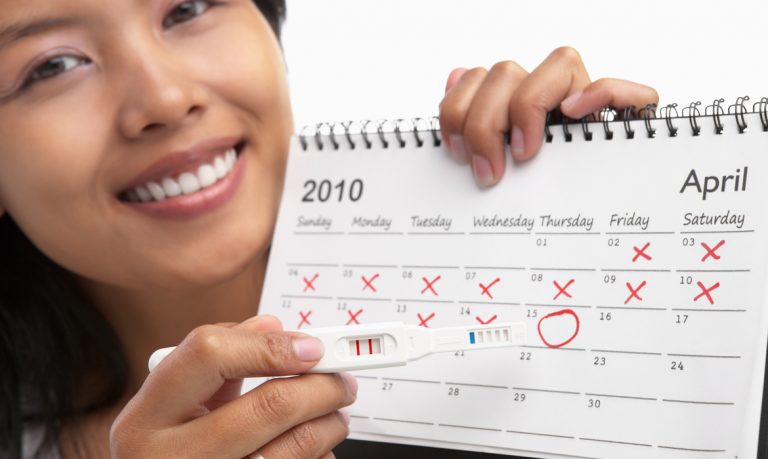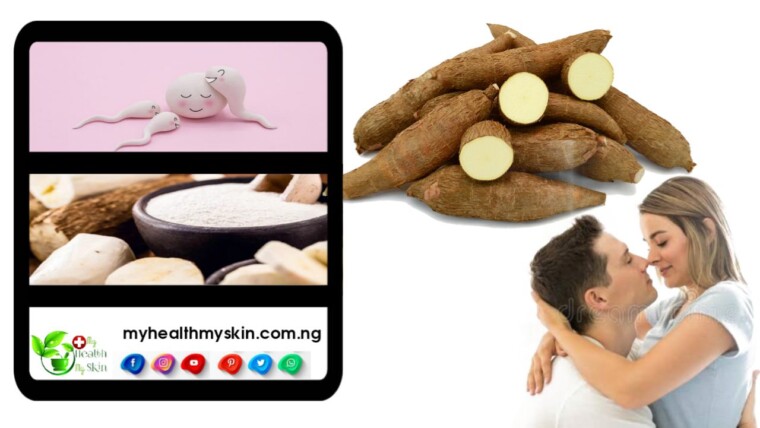Knowing how to calculate the fertile period is essential for women who want to get pregnant and even those who think it’s not time yet.
That is, having knowledge about ovulation time can facilitate or postpone a pregnancy.
[lwptoc]
What is a woman’s fertile period?
Before learning how to calculate the fertile period, let’s explain what the fertile period is.
Basically, it is the range of days in which a woman is more likely to get pregnant if she has sex.
It is the phase of the menstrual cycle in which the ovary prepares and releases the egg to be fertilized.
To better understand how it works, it’s important to know that the egg only remains viable for fertilization for just 24 hours.
Sperm survive in the woman’s body from 3 to 7 days, and in the first 2 days they will be more active.
But attention: the fertile period count does not serve as a contraceptive method, popularly known as a table.
This is because there are factors that cause natural variations in the cycle that can make it imprecise and unsafe.
How to calculate the fertile period
To calculate your fertile period, you need to know how long your menstrual cycle lasts.
The first day of the cycle is when menstruation starts and the time until the start of the next menstruation defines the number of days of your menstrual cycle.
In regular 28-day cycles, the fertile period comprises the three days before and three days after, with reference to the 14th day of the menstrual cycle — counting from the first day of menstruation.
If you’re not sure how many days your cycle lasts, track your period intervals over a few months and calculate the average time.
With the number in hand, subtract 14. This will be your ovulation day. For example, if a woman has a 30-day cycle, her ovulation must occur on the 16th day (30 – 14 = 16), that is, her fertile period occurs between the 13th and 19th days of the menstrual cycle (three days before and three later).
If the couple has sexual intercourse during this period, the chances of getting pregnant are higher, especially if they are frequent and close to the day of ovulation.
My cycle is very irregular. How to calculate?
One way to find out when the fertile period is in the case of an irregular cycle is to record the duration of each menstrual cycle for a year and then subtract 18 days from the shortest cycle and 11 days from the longest cycle.
For example: if your shortest cycle was 22 days and your longest cycle was 28 days, then:
22 – 18 = 4 and 28 – 11 = 17, that is, the fertile period will be between the 4th and 17th days of the cycle.
To be sure of the fertile period in case of an irregular cycle, women can resort to the ovulation test that is bought at the pharmacy, consult a gynecologist and be aware of the signs of the fertile period, such as discharge similar to egg white.
What symptoms can be observed during the fertile period?
Some women are able to determine the beginning of the fertile period by their well-being and characteristic symptoms. Gynecologists identified four main signs of the beginning of fertility:
- Pain in one ovary;
- Changed discharge;
- Increase in basal temperature;
- Hormonal changes leading to mood swings.
Also, thanks to the changes in a woman’s body during fertility, there are a number of proven methods that allow you to control internal processes and determine fertile days.
The most popular methods were the Billings method, temperature measurement, and the use of specialized ovulation tests.
Billings method: examination of the cervix
The fertile phase is the optimal time for conception. It is possible to determine the beginning of fertility in a woman by monitoring the condition of the cervix, or rather, its secretions.
This method is called the Billings method and is based on keeping daily records.
Cervical mucus is a natural secretion that surrounds the neck and changes depending on the phase of the cycle.
A regular external examination will allow you to determine the amount and consistency of mucus, which will later help determine the beginning of fertility.
In the first days after menstruation and a few days before their onset, there is almost no mucus in the cervix, and in the process of ovulation it becomes more, it acquires a viscous consistency and looks transparent.
After the end of the ovulation period, the mucus becomes much less, it acquires a sticky and thick structure.
Basal temperature measurement
The period of fertility is calculated by regular measurement of the basal temperature.
To do this, it is enough to use a thermometer and measure the temperature in the rectum or in the vagina.
Gynecologists recommend taking measurements immediately after waking up, without getting out of bed. In order for the indicators to be accurate, it is necessary to measure the temperature in the position in which you woke up.
When choosing a thermometer, preference should be given to a special basal thermometer, and during the entire course of measurement, do not change the thermometer, as this can affect the accuracy of the readings.
Also, the procedure must take place at the same time, for this you will need to use an alarm clock. Indicators may fluctuate if the woman had sexual intercourse, drank alcohol or experienced stress the day before.
All results are recorded in a table. An increase in temperature, the indicators of which persist for two to three days, will be a sign that a favorable period for fertilization has arrived.
You may also be interested in:
How do i know when i’m ovulating?
5 Natural remedies for Menstrual pain
Pregnancy During Menstruation – Myth Or Reality?
Determination of fertility using a test
All women know about pregnancy tests, but not all use special tests that will help determine the beginning of fertile days.
For expectant mothers who do not want to bother and subject themselves to daily examinations and measuring procedures, the best option is the ovulation test.
A wide selection of devices will allow you to choose the most convenient and affordable type of test that will establish the fertile period for conceiving a child.
This method of determination is considered the most accurate, but in order not to buy 10 tests, it is recommended to use it after first calculating the approximate period of ovulation according to the calendar.
It is worth remembering that the trysts must first seek guidance from the gynecologist to take the necessary tests before becoming pregnant.
If you don’t want to get pregnant, it’s also important to consult your doctor to use the proper contraceptive method.
Conclusion
Pregnancy planning is an exciting process, but sometimes a young couple faces the fact that conceiving a baby is not so easy, and the planning period drags on for months. Women buy tests in the hope of seeing the long-awaited second strip, and every day of delay is accompanied by slight excitement and joy. To increase the chances of conception, gynecologists recommend choosing a fertile period for this.
We hope this article helped you learn how to calculate the fertile period. You may also want to learn How to calculate the Pregnancy weeks, or check out our Fertility & Fibroids category.
If you liked this article, then please share on your social networks and stay tuned for upcoming articles. You can also find us on Telegram and Facebook.













